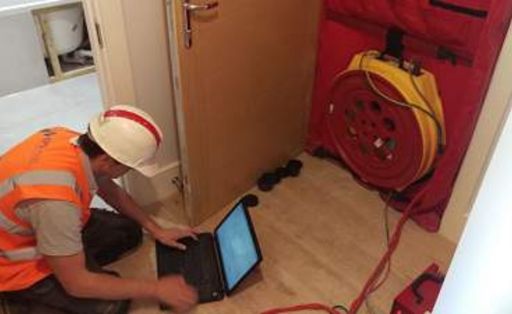Airtightness testing is essential to any building project, whether a new build or refurbishment. By measuring the airtightness of a building, you can find out how well it performs in terms of energy efficiency and thermal comfort.
The primary definition of air tightness testing is finding and recording the amount of air that escapes a building. The test is used to help prevent draughts, moisture, and energy loss. Before the test, the building is pressurized using a fan. The fan is then turned off, and the pressure in the building is measured.
This test can be used on any building, from residential properties to office blocks. It’s an important part of the construction process and should be carried out by a qualified professional.

There are many benefits of airtightness testing, including the following:
Contents
1. Improving energy efficiency
Did you know that around 30% of the heat in a building can be lost through gaps and cracks? This is why air tightness testing is so important, as it can help to reduce heat loss and improve a building’s energy efficiency. When heat is reduced, it also means that your heating bills will be lower. You could save up to 10% on your energy bills if your home is airtight.
2. Reducing draughts
Draughts are not only annoying, but they can also be harmful to your health. If you suffer from asthma or allergies, draughts can trigger your symptoms. Airtightness testing can help to eliminate draughts by finding and sealing any gaps in the building. This will create a more comfortable environment for everyone in the building.
3. Preventing moisture damage
Moisture is one of the biggest enemies of buildings, as it can cause mold, dampness, and structural damage. Airtightness testing can help to prevent moisture damage by finding and sealing any gaps that allow moisture to enter the building. This will protect the building from long-term damage and create a healthier environment for everyone.
4. Improving acoustic performance
If you live in a noisy area, airtightness testing can help improve your home’s acoustic performance. By sealing any gaps in the building, you can reduce the amount of noise that enters the property. This will create a more peaceful environment for everyone in the building.
5. Enhancing thermal comfort
Airtightness testing can also help to enhance thermal comfort by preventing heat loss. Keeping the heat in the building can create a more comfortable environment for everyone.
6. Protecting the environment
Airtight buildings are not only more energy efficient, but they also have a lower carbon footprint. This is because less energy is required to heat and cool the building, which reduces the amount of greenhouse gases emitted into the atmosphere.
7. Increasing the value of your property
If you’re considering selling your property, airtightness testing can help to increase its value. Airtight buildings are more energy efficient and have a lower carbon footprint, which makes them more attractive to potential buyers.
8. Creating a safer environment
Airtight buildings are also safer, as they are less likely to be affected by fire, smoke, and toxic fumes. By sealing gaps in the building, you can create a more secure environment for everyone in the building.
As you can see, there are many benefits of air tightness testing. If you’re planning a new build or refurbishment project, ensure that you include air tightness testing in the construction process.
